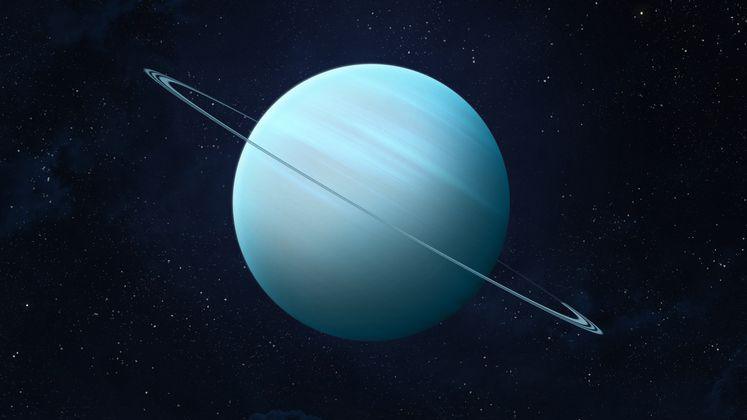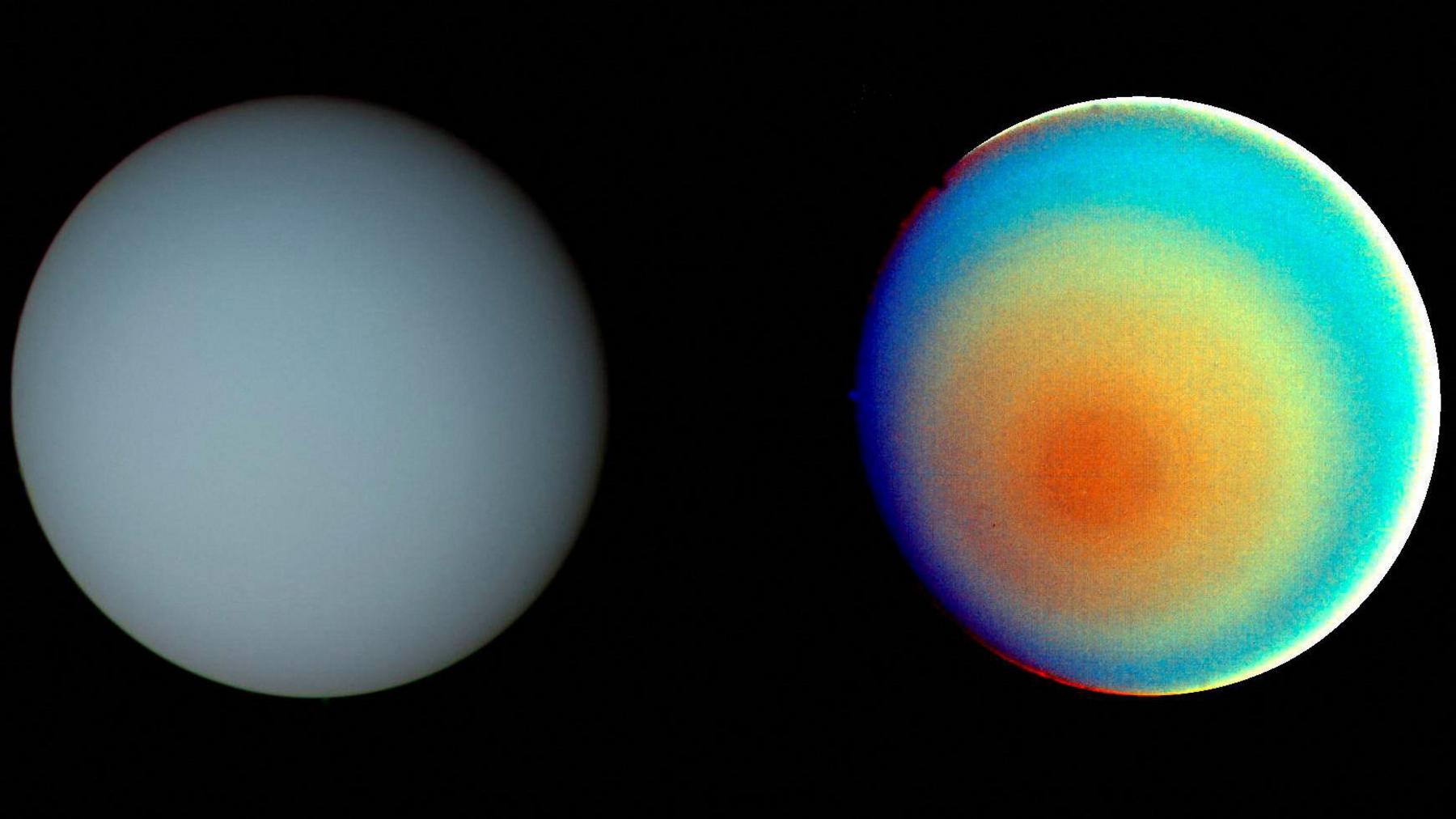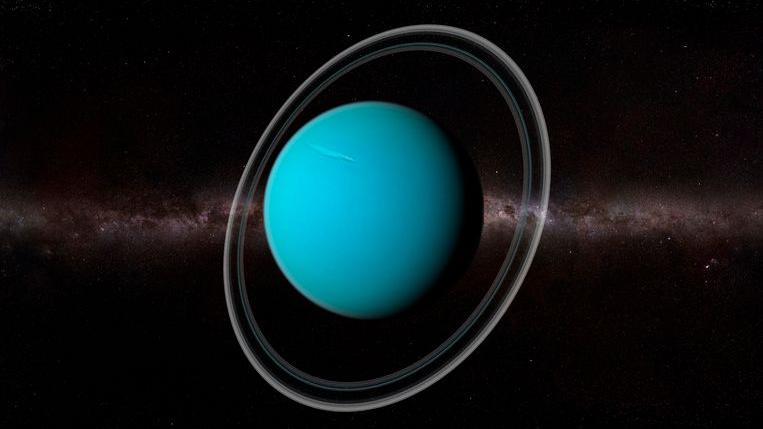Could Uranus be warmer than we thought?

- Published
The planet Uranus is known for being one of two ice giants in the outer solar system and sits in a remote part of the Milky Way.
Only one Nasa spacecraft, Voyager 2, has ever travelled close to it and the planet has long been thought of as a cold and distant place.
But could it actually be warmer than we first thought?
A new study by scientists suggests that could be true as they think Uranus gives out more heat than it receives from the Sun.
More space news
Scientists discover why Betelguese changes brightness
- Published23 July
Earth spinning faster makes today one of the shortest on record
- Published21 July
Scientists spot start of a new solar system for first time
- Published17 July
What did scientists find?

Two pictures of Uranus put together from images taken by Voyager 2 spacecraft
The new study was carried out by a group of experts from Nasa and from the University of Oxford in the UK.
They decided to take a closer look at the huge planet, which is four times wider than Earth.
One of the reasons scientists don't know much about Uranus is because it's located so far away.
It's only ever been visited once before, in a brief flyby by the Voyager-2 probe nearly 40 years ago, in 1986.
Data from that mission suggested the planet is colder than expected, which challenged ideas of how planets formed and evolved.
However, the team decided to use the latest tech and advanced computer modelling and take a fresh new look at the old data.
As a result, scientists now think the planet may actually be warmer than previously expected.
Lead author Professor Patrick Irwin, from the University of Oxford, explained: "We did many calculations to see how much sunshine is reflected by Uranus and we realized that it is actually more reflective than people had estimated."
Researchers found that Uranus releases about 15% more energy than it receives from the Sun, suggesting that it has its own heat.
The team says that the discovery could help people better understand exoplanets, which are planets located outside the solar system.
Five top facts about Uranus

1. Uranus is the seventh planet from the Sun, and the third largest planet in the Milky Way.
2. Uranus is unlike any other planet in our solar system. It spins on its side, which means each pole directly faces the Sun for around 42 years at a time, followed by 42 years of complete darkness.
3. Uranus has two sets of rings. The inner group of nine rings is mostly made up of narrow, dark grey rings. There are also two outer rings: the innermost one is reddish in colour, and the outer ring is blue.
4. Uranus is one of just two planets in our solar system that rotate in the opposite direction to all the rest of the planets in the Milky Way - the other one being Venus.
5. According to Nasa, Uranus gets its blue-green colour thanks to methane gas in the atmosphere. Sunlight passes through the atmosphere and is reflected back out by Uranus' cloud tops. Methane gas absorbs the red portion of the light, resulting in a blue-green colour.
